29th Week of Pregnancy
Managing Late Pregnancy Symptoms

Baby's Growth and Development When You're 29 Weeks Pregnant
Your baby in the 29th week of pregnancy might be best described as long and strong!
- Your baby probably weighs almost 3 pounds. From crown to rump she is about 10 inches long, about the length of a large cucumber.
- Your baby's activity probably keeps getting more frequent and strongerduring the 29th week of pregnancy. Hold on — some of your baby's jabs even might take your breath away!
- Your baby already might be within almost three inches of her birth length, although she still has weight to gain to fill out.
- During the next 11 weeks, she might more than double or almost triple her current weight. Much of this weight will happen as she gains important weight under her skin.

Your Changing Body When You're 29 Weeks Pregnant
When you’re 29 weeks pregnant, you begin your 3rd trimester of pregnancy. Now, most of your pregnancy symptoms are caused by your uterus continuing to grow. Here’s what else is happening in your 29th week of pregnancy:
- Your heart and circulatory system work overtime as your body keeps on producing more blood than normal, carrying oxygen and nutrients to your baby.
- You occasionally might notice Braxton-Hicks contractions (false labor) as your body prepares for labor.
- Ready for more of the same? Most of your late-pregnancy symptoms are familiar by now. Look for some of these symptoms in the weeks to come.View the symptoms.
- Weight gain: Most women average about a pound a week or about 4 pounds a month.
- Veins bulging a bit or becoming blue? Your veins are becoming larger to accommodate increased blood flow.
- You might notice veins bulging and becoming visible as bluish or reddish lines beneath the surface of your skin, particularly on your legs and ankles. Varicose veins often can appear for the first time during pregnancy, usually in the last trimester.
- Varicose veins might be sore or itchy.
- Tips for care. You cannot prevent varicose veins, but you can keep them from getting worse and relieve any swelling or soreness with extra care:
- Keep your blood flowing by limiting how long you stand or sit in one position.
- Avoid crossing your legs, which can cut off circulation.
- Prop up your legs whenever possible.
- Try sleeping on your left side, which is best for circulation.
- Watch putting on any extra pregnancy weight.
- Avoid heavy lifting.
- Work in walks or other exercise.
- Avoid restrictive clothing, but ask your doctor about the benefits of support hose.
- Eat foods rich in vitamin C.
- Spider veins, similar to varicose veins, appear as tiny, reddish spots with raised lines that branch out from the center.
- They might appear on your face, upper chest, or arms.
- They usually disappear a few weeks after your baby is born.
- To keep them from spreading, follow the same tips for varicose veins.
- You also might experience hemorrhoids, caused by varicose veins in your rectum. Constipation increases this risk.

Wellness and Nutrition When You're 29 Weeks Pregnant
In your 29th week of pregnancy, nutrition and physical activity can help you cope with many of your 3rd-trimester pregnancy symptoms.
- Eating enough foods with vitamin C helps your body manufacture the connective tissues that repair and maintan blood vessels. Try carrots, winter squash, mangoes, sweet potatoes, leafy greens, lean sources of meat, eggs, dairy, and fortified whole-grain cereals.
- Eating regular, balanced meals and snacks can help improve both your circulation and leg strength.
Doctor visit:
You might be visiting the doctor when you’re 29 weeks pregnant or in the next couple of weeks
- This might be your last monthly visit.
- Your doctor might ask to see you every two weeks and then once a week until your delivery.
- Your doctor will continue to monitor your health and your baby's progress.
Give Me a Break
Many women begin to slow their activity in the 29th week of pregnancy and beyond, which is normal.
- You are carrying more weight, which can make any physical activity more exhausting than normal.
- Respond to your body’s needs. It’s OK to modify your routine. Just try to keep moving every day.
30th Week of Pregnancy
Short of Breath? Try These Tips.

Baby's Growth and Development When You're 30 Weeks Pregnant
During this 30th week of pregnancy, your baby continues to steadily add weight and important, insulating layers of fat to his body.
- At 30 weeks of pregnancy, your baby weighs about 3 pounds and is about10½ inches long from crown to rump, or about the length of a bunch of celery. (His legs and feet increase this measurement by many more inches.)
- From this week until week 37 of pregnancy, your baby gains an impressivehalf a pound a week!
- Your baby might be practicing breathing movements as he rhythmically moves his diaphragm. You even might notice a slight twitching in your abdomen when this happens.
- Your baby's brain continues to expand and develop, creating additionalgrooves and folds in the brain's surface. These wrinkles give your baby's brain tissue the needed room to expand as he develops and learns throughout his lifetime.
- Your baby's brain can now regulate his temperature, so he begins to lose the lanugo — fine hair that has been covering his body for warmth.

Your Changing Body When You're 30 Weeks Pregnant
By the 30th week of pregnancy, that 2nd-trimester energy already might seem long gone. You might feel tired as your body carries extra baby weight and your ever-expanding uterus places additional pressure on your body's other organs and systems. Also during your 30th week of pregnancy:
- Your uterus continues to expand to the bottom of your rib cage.
- Hormones continue to soften and loosen connective tissues in your body as it prepares for childbirth. You might notice hip pain, probably on just one side, as well as lower-back pain from your growing uterus.
- It's all in the wrist! With swelling and additional baby weight, sometimes the nerves in your wrist might become temporarily compressed.
- If you notice numbness, tingling, or even pain in your hands, you might have carpal tunnel syndrome, which affects 25% of pregnant women.
- These effects should disappear after your baby is born.
- Your doctor might suggest a special wrist splint if your symptoms cause you trouble.
- Numbing or tingling in other places? When you’re 30 weeks pregnant, your growing uterus might press on nerves connecting to your legs or arms, causing legs, toes, or entire arms to tingle. This is normal for some women and will disappear after your baby's birth.
- Short of breath? This is normal for women when you’re 30 weeks pregnant and through the 3rd trimester of pregnancy. Your expanding uterus is pushing your diaphragm out of place.
- You might feel as if you can't get enough air, which can be uncomfortable.
- But, remember, with your body's progesterone boost, you are breathing deeply and taking in more air with each breath than before you were pregnant.
- Tips for better breathing during your 30th week of pregnancy (and beyond!):
- Take it slow. When you move slowly your lungs don't have to work so hard.
- Need some breathing room? Good posture is key. Sitting up straight gives your cramped lungs more room to expand.
- Sleeping propped up also gives your lungs more space.
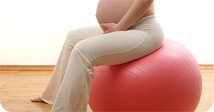
Wellness and Nutrition When You're 30 Weeks Pregnant
When you’re 30 weeks pregnant, your days become filled with preparations for your baby's arrival. And you might find yourself with less and less time for menu planning or routine exercise. During your 30th week of pregnancy, try these tips:
- Little changes now can go a long way later! If you've found yourself reaching for convenience foods, work in these healthy substitutes:
- Substitute a bag of crunchy chips for prepackaged, crisp baby carrots.
- Replace fried chicken with tastefully seasoned grilled chicken.
- Exchange salty chips or pretzels for a handful of tasty almonds, cashews, or your favorite protein-packed nut.
- Satisfy your taste for an ice cream sundae with frozen yogurt topped with fruit.
- During your 30th week of pregnancy, you might want to break up exercise into several 10- or even 5-minute sessions. You might find small segments of exercise easiest on your body … and your busy schedule … at this time of your pregnancy.
- Exercise is still best for countering many of those late-pregnancy symptoms and pains, and will help you lose baby weight more quickly.
- Low-impact choices in pilates or yoga might help you stop and relax, which can help mind as well as body! Just be sure to limit any time on your back, as this can restrict blood flow to your baby.
- Gentle stretches might be particularly useful in your exercise routine right now. Be sure to take it slow and easy on pregnancy-loosened joints and ligaments.
31st Week of Pregnancy
No More Bad-Hair Days

Your Changing Body When You're 31 Weeks Pregnant
When you’re 31 weeks pregnant, your expanding uterus might prompt several additional changes in your body's normal operation.
- You might experience some, many, or just a few of the 3rd-trimester pregnancy symptoms.
- Your breasts continue to grow larger.
- Your breasts will be 1 to 3 pounds heavier by the end of your pregnancy.
- Most of this weight is from enlarged milk-producing glands and increased blood.
- If you already haven’t started to leak colostrum (the first milk for babies who breastfeed), you might begin soon. Breast pads are a discreet and easy way to handle this. However, you might not leak at all before delivery, which is also normal.
- Losing urine when you laugh is no laughing matter! Ask any pregnant woman and she probably will agree that leaking urine when you cough, sneeze, or laugh can be one of the most annoying symptoms of late pregnancy.
- Leaking urine is caused by the increased pressure of your growing uterus on your bladder.
- This problem likely will disappear after your baby is born.
- Looking to control little leaks?
- Be sure you empty your bladder completely. Try leaning forward when you're on the toilet to be sure.
- Try to go more frequently — as often as every 30 to 60 minutes.
- Drink at least 8 glasses of fluid a day.
- Use Kegel exercises that strengthen your pelvic floor.
- Wear panty liners or pads if needed.
- Beauty at its best. It’s nice to know that your beauty is one of the best benefits of pregnancy:
- Time for a manicure? During your 31st week of pregnancy, you might have noticed that your fingernails (and toenails) grow at record pace.
- Head-turning hair! Your hair probably is fuller and in better shape than ever before. You can thank pregnancy hormones, increased circulation, and a pregnancy-prompted change in your hair's growth cycle.

Baby's Growth and Development When You're 31 Weeks Pregnant
During your 31st week of pregnancy, your baby's body and brain continue to make the connections that enable her systems to work as a whole. Also when you’re 31 weeks pregnant:
- When you’re 31 weeks pregnant, your baby weighs more than 3 pounds and is 11 inches long from crown to rump, about the length of a bunch of bok choy.
- Your baby's reproductive system continues to develop. In boys, testicles are moving from the kidneys through the groin to the scrotum. In girls, her clitoris is visible, but her labia are still growing to cover it.
- Your baby's lungs are now more developed but are not completely mature.
- As trillions of brain connections develop, your baby is already using all five senses.
- You might notice that your baby has more defined periods of being awake(and active) or asleep.

Wellness and Nutrition When You're 31 Weeks Pregnant
As priorities and excitement mount now and in the weeks to come, don't forget to carve out the time you need for exercise and planning your balanced nutrition. During your 31st week of pregnancy, get ready for:
- Another prenatal checkup! You probably have a doctor's appointment this week or very soon, if you're now seeing your doctor every two to three weeks.
- By the time you're 36 weeks pregnant, you'll probably begin visiting your doctor weekly.
- These upcoming weekly appointments specifically will check your baby's progress toward birth.
- Relaxation techniques — they're not just for childbirth. If you find yourself feeling a little anxious about childbirth, restless, or having difficulty sleeping, try some of your relaxation techniques from childbirth classes. They are great tools to use anytime! Also check out these tips.
- Say cheese and smile! Away from the house but need to brush? Try chewing on a piece of hard cheese to cut down on the chance of pregnancy cavities. Cheese actually reduces the acidity of your mouth and decreases bacteria that can lead to cavities.
32nd Week of Pregnancy
Smart Solutions for Pregnancy Swelling
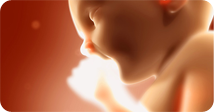
Baby's Growth and Development When You're 32 Weeks Pregnant
Your baby is spending quite a bit of his time practicing the skills he'll need after birth, such as sucking, swallowing, and breathing. Other changes during your 32nd week of pregnancy include:
- At 32 weeks of pregnancy, your baby weighs about 4 pounds and is almost 11½ inches long from crown to rump, or the length of a small watermelon.
- Lanugo, the soft, downy hair that insulates your baby, continues to fall off this week.
- You might notice a change in your baby's movements this week, as he becomes more crowded in your uterus.
- Kicks and movements might seem less powerful.
- Be sure you monitor your baby's movements from time to time, especially if you think you've noticed a decrease in activity. The 10-Kick Count can help.li>
- Your baby's skin is no longer see-through. It looks more like yours.

Your Changing Body When You're 32 Weeks Pregnant
When you’re 32 weeks pregnant, you might experience new symptoms or continue with now-familiar late-pregnancy symptoms as your body responds to your growing baby's needs.
- You might notice that your skin across your abdomen, in particular, is dry and itchy from ongoing stretching and tightening. Lather on the lotion for some relief! Thick, creamy body butters are best.
- You might be feeling some anxiety about your baby's upcoming birth or your responsibilities as a new parent. Finding out more information about what you can expect and making decisions about his birth and care after he is born can help.
- During your 32nd week of pregnancy, you might begin to notice mild swellingin your hands, face, legs, ankles, or feet caused by the extra fluids in your body.
- Some swelling (or edema) is normal, but this is one area your doctor will watch closely.
- Swelling is usually worse in late pregnancy and if you're pregnant during the summer.
Swell Solutions for Your 32nd Week of Pregnancy
- Don't stand or sit for long without taking breaks. Try a brisk, brief walk to keep circulation and fluids moving.
- Elevate your legs when possible. Sleep with your feet propped on a pillow to keep fluids from pooling in your lower body.
- Lie on your left side, so it's easier for kidneys to do their job.
- Keep up regular exercise. Walking is ideal for swollen feet because it keeps the blood flowing. Swimming or water aerobics push fluid from your tissues to reduce swelling.
- Drink more water. It's simple: the more you drink, the less you retain.
- Don't cut salt completely. Severely limiting your salt intake actually can increase swelling.
- If you swell suddenly or the swelling is particularly bad, contact your doctor.
Soothing Sciatica Pain
- If you feel a tingling, numbness, or pain that travels from your hip or rear down your thigh on one or both sides of your body, your growing uterus is probably placing pressure on one or both of your sciatic nerves (the major nerves that run from your lower back down your legs to your feet).
- This discomfort (called sciatica) is temporary and usually diminishes or disappears completely as your baby changes position.
- Lifting, bending, or even simple walking can aggravate pain.
- Try soothing sciatic pain with these tips:
- Try warm baths or a heating pad.
- Switch the side you sleep on.
- Change positions regularly during the day.
- Get up and move at least once every hour.
- Ease the pressure of your uterus on the sciatic nerve by swimming.

Wellness and Nutrition When You're 32 Weeks Pregnant
When you’re 32 weeks pregnant, you might find yourself eating less at one sitting and moving less in general. But less can still mean more!
Snack for Balanced Nutrition
33rd Week of Pregnancy
Solutions for a Great Night's Sleep
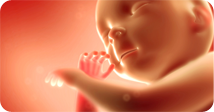
Baby's Growth and Development When You're 33 Weeks Pregnant
The 33rd week of pregnancy and the four weeks that follow mark a time of astounding growth as your baby reaches her ultimate birth weight.
- She weighs about 4½ pounds and might grow a full inch in length this week alone! She’s grown to about 12½ inches from crown to rump, or about the length of an average pumpkin.
- Your baby continues to gain weight rapidly — about a half pound a week.
- The pupils of her eyes can now adjust to bright or dim light, just like yours.
- Her lungs continue to develop.
- Your amniotic fluid has reached its maximum level now — there’s simply no more room! With less fluid to cushion them, your baby's kicks might feel a bit uncomfortable.

Your Changing Body When You're 33 Weeks Pregnant
When you’re 33 weeks pregnant and in the weeks to come, your body prepares for the upcoming demands of labor and delivery.
- The milk-producing glands in your breasts grow larger, increasing your breasts' overall size. Tiny, oil-producing glands that moisturize the area around your nipples might be more noticeable.
- Your muscles are probably sore all over from carrying your almost full-grown baby!
- Your growing baby might be making it more difficult for you to sleep. See tips for getting some shut-eye.
- You're likely to feel practice contractions or false labor pains (Braxton-Hicks) soon.
- You probably will continue to gain about a pound a week during the 33rd week of pregnancy and the next several weeks.
- You're probably thinking about labor and delivery right now. It's natural for you to feel excited as well as anxious. During your 33rd week of pregnancy, try these tips to prepare:
- Educate yourself. Childbirth classes offer valuable insights about what to expect.
- Talk to women with positive birth experiences about labor techniques that worked for them.
- Discuss questions or worries with your doctor.
- Make a plan, but remain flexible about your birthing preferences and pain-relief options.
- If you notice any of the signs of preterm labor during the 33rd week of pregnancy and the weeks to come, contact your doctor.

Wellness and Nutrition When You're 33 Weeks Pregnant
During the 33rd or 34th week of pregnancy, you probably have a prenatal doctor visit every two weeks.
- In this visit or the next, your doctor might begin to examine your baby's position for birth.
- You might have one more appointment before you begin weekly visits.
Time for a Tour!
- It’s a good time to preregister at your hospital or birthing center.
- Filling out paperwork will be much easier now than when you're in labor!
- Take a look now to take away some of the unknown.
- If you already haven’t toured the birthing facilities as part of your childbirth classes, ask to see a birthing or labor and delivery room.
- Clarify where you need to check in and where your partner needs to park, leaving two less worries when the big day arrives!
- Find out what you can bring to help pass the time, whether it’s a few DVDs or your laptop.
Eating Well Is Not Just About What You Eat Now — It's How Much and When
- When you’re 33 weeks pregnant, your choice of food, the time of day you eat it, and how much you eat at one sitting directly can impact your well-being.
- If certain foods or eating past a certain time prompt bloating, heartburn, or other uncomfortable symptoms, temporarily try to do without.
- After your baby's birth, you can reintroduce old favorites back into your diet.
- Be sure even your small meals include a balance of nutrients to fuel both you and your baby.
Get a Leg Up on Leg Cramps
Sharp, painful cramps in your calves might be bothersome at night. To lessen leg cramps during your 33rd week of pregnancy, try these tips:
- Stretch before bed.
- Straighten your leg and flex your foot toward your body, keeping your heel down and toes up.
- Bend your entire foot instead of pointing your toe.
- Massage your calf in long, downward strokes if spasms wake you.
What’s Keeping You Awake?
When you’re 33 weeks pregnant, finding a comfortable sleeping position to get the restful sleep you need isn’t always easy. With all of your body's physical and emotional changes, it's no wonder.
- Hormonal changes, heartburn, pressure on your bladder, and a baby who's growing larger by the minute all can add to the challenge of getting a full night's sleep.
- You might find it hard to relax or clear your mind with soaring emotions, excitement, and even worries.
Simple Solutions for Sleep
- Try winding down for the night a little earlier with a short, warm bath or relaxation exercises from your childbirth classes.
- Keep a comfortable temperature in your dark and quiet room.
- Limit late-evening liquids.
- Exercise regularly but not within several hours of going to bed.
- Vote’s in! When you’re 33 weeks pregnant, women agree on acomfortable sleeping position: Try lying on your right or left side with your legs and knees bent. This takes the pressure off your primary veins in your legs and your lower back.
- Pile up the pillows! Use one pillow to support your belly and another between your calves to support your upper leg. Try placing another small pillow or rolled blanket in the small of your back to relieve pressure from the hip you're lying on.
- If you're not sleeping, consider getting up and listening to music, reading, or writing until you're ready to try again.
- If you really need to catch up on rest, take a short nap during the day, but try to keep the nap from interfering with your regular nighttime rest.
34th Week of Pregnancy
Putting Your Birth Plan in Place

Baby's Growth and Development When You're 34 Weeks Pregnant
Between the 34th week of pregnancy and the 37th week of pregnancy, your baby continues to refine his systems and put on significant weight.
- He probably weighs about 5½ pounds and is about 12½ inches, about as long as a loaf of bread, from head to rump (plus an additional 5 inches or more in legs!).
- The white, waxy coating protecting your baby's skin (vernix) thickens this week.
- The soft downy hair (lanugo) that insulated your baby's skin so effectively for months is now almost gone.
- Your baby's fingernails have reached the tip of his fingers.
- Your baby might gain about a half a pound this week as his weight continues to build quickly.

Your Changing Body When You're 34 Weeks Pregnant
You soon might notice a difference in your pregnancy symptoms now or in the coming weeks, especially if your baby moves lower into your pelvis. Here’s what else is going on in your 34th week of pregnancy:
Look Who Dropped In!
- Your baby could drop or settle into your pelvis in preparation for birth as early as this week. This is called lightening.
- When your baby does drop into the pelvic area, he is considered engaged or in position for birth.
- Lightening can happen several weeks before your baby's birth, especially if this is your first pregnancy. Or, it could happen the day your labor begins.
- You might notice that your belly seems lower and more tilted forward when this happens.
- Lightening might bring relief from upper-body pregnancy symptoms, such as shortness of breath and heartburn; however, in exchange, you'll possibly feel increased pressure on your pelvis, hips, and bladder.
- This can cause discomforts, such as leaking or frequent urination, to increase.
- If you've experienced numbness or pain from pressure on your sciatic nerve, this also should stop if your baby drops now or in the next few weeks.
- You might continue to notice late-pregnancy swelling in your legs or ankles throughout this week. Your doctor will continue to watch this during checkups.
- Braxton-Hicks contractions might continue to prepare your body for childbirth.

Wellness and Nutrition When You're 34 Weeks Pregnant
Exercising Now for Labor Later!
During your 34th week of pregnancy, certain muscles in your body will get a significant workout during the birth of your baby. You can help these muscles prepare now.
- Kegel exercises strengthen your pelvic floor. They also can help with any immediate leaking urine and hemorrhoid problems.
- Pelvic tilt increases stomach muscles and flexibility for birth. It also can alleviate current back pain.
- Tailor sitting (sitting cross-legged) stretches and strengthens muscles in your back and thighs and makes the joints in your pelvis more flexible for an easier delivery. It also improves blood flow to your lower body. Try it:
- Sit on the floor with your back straight (or with your back against the wall, if you need extra support).
- With knees bent to the side, bring the soles of your feet together and pull your heels in toward your groin area.
- Let your knees slowly drop to each side until you feel a stretch in your inner thighs. Be sure you don't bounce.
Finding a pediatrician
If you already haven’t chosen a pediatrician, you might want to start interviewing possible choices. It’s important to try to select one before your baby's born so your pediatrician can be the first to examine the baby at the hospital. Considerations:
- Does the doctor accept your insurance plan?
- How large is the practice?
- Will your baby be seen by the same doctor?
- What are the office hours?
- What are the after-hours procedures?
- With what hospital does the doctor work?
Learn About Labor and Prepare Your Plan
When you’re 34 weeks pregnant, you might want to talk with your doctor about his or her usual practices during labor. You also can share your ideas and preferences.
During your 34th week of pregnancy, you might want to develop a birth planas a guide for how you want to deliver your baby.
Fill up on fluids during your 34th week of pregnancy
Do you know that you lose water when you sweat, go to the bathroom, and even breathe? Drinking water is more important than ever as dehydration can lead to Braxton-Hicks contractions. In addition to preventing contractions, water:
- Helps build important tissues
- Assists nutrients as they circulate in and out of your body
- Aids in digestion
- Helps you maintain the right amount of amniotic fluids
TIP: You can use other fluids, such as 100% fruit juices and milk, but try to keep water as your basis.
35th Week of Pregnancy
Your Baby: Positioned for Birth?

Baby's Growth and Development When You're 35 Weeks Pregnant
During this 35th week of pregnancy, your baby's growth has been progressing at a remarkable pace as your due date draws near. But the next three weeks could bring your baby's most rapid weight gains.
- Your baby probably continues to gain at least a half a pound a week.
- During the 35th week of pregnancy, she already might be close to her birth length, near 18 inches from head to toe, and she continues to build up necessary fat, especially in her shoulders.
- Within your now-crowded uterus, your baby might shift her movements from kicks and punches to more rolls and wiggles.
- Her brain development continues to advance quickly.
- Your baby already might have settled into a head-down position in your pelvis, if this is your first pregnancy. This is the ideal position for delivery because your baby's head is the biggest part of her body.
- Position refers to your baby's placement in your uterus — whether he is facing right or left or is headfirst or feetfirst. Your baby floats in your uterus and changes positions often throughout early and mid-pregnancy. When you’re between 32 and 36 weeks pregnant, your baby usually rotates to a head-down position for labor and delivery.
- Headfirst position is called the vertex position.
- Feetfirst position is called a breech position.
- If your baby is breech but is not too far down into your pelvis, your doctor might try to turn your baby into the proper position a few weeks before your due date.
- Lying-sideways position is called a transverse position.

Your Changing Body When You're 35 Weeks Pregnant
When you’re 35 weeks pregnant, your body continues to make internal adjustments and preparations for your baby's birth.
- Your cervix already might begin to dilate or open very slightly to get ready for birth in a few weeks.
- When this begins, you might notice a sharp pain in your vagina. This doesn't mean you're in labor.
- Some women begin dilating in the few weeks, days, or even hours before labor.
- You might continue to feel practice contractions this week. Remember, these contractions will not settle into a regular rhythm.

Wellness and Nutrition When You're 35 Weeks Pregnant
During this busy time of preparation, it's more important than ever to maintain your energy and strong health with balanced nutrition and regular exercise.
- You are probably visiting your doctor every two weeks now. Most of these visits will be the same as previous checkups with a few additions:
- Your doctor probably will screen you using a routine test for group B streptococcus (GBS).
- This bacterium (not related to strep throat) usually lives harmlessly in the vaginas of 10% to 35% of healthy women.
- Although GBS poses no risk to you, your baby can pick it up during delivery.
- If you test positive for GBS, you probably will be given antibiotics during labor to protect your baby.
- Your doctor also might check your baby's position to see if she's moved into place for delivery.
- Your doctor probably will feel your baby's position from the outside of your abdomen. As you get closer to your due date, your doctor might perform a vaginal exam to check your cervix.
- Your doctor will confirm which part of your baby's body is farthest down in your pelvis. In most cases, it’s your baby's head
Putting a Plan in Place
Working out the details now can lead to a smoother labor and delivery later!
- Be sure both you and your partner know the way to the hospitaland how long it takes to get there, from home or work. Do apractice run, if necessary!
- Have a backup route ready in case of poor weather or traffic problems.
- Have a plan for each time of day (or night). Who will take you to the hospital? How do you reach your partner?
- Make preparations if you have other children or pets.
Preplanning Quick List
- Are the phone numbers for your doctor, partner, and sitter in one place?
- Are your maternity benefits and leave paperwork complete?
- Are you preregistered at the hospital?
- Do you know when to call the doctor if labor has begun?
- Who will drive you if it's during the day or at night?
- Where do you park?
- Is videotaping allowed?
- What are the hospital's visitor policies?
Practice makes perfect! If you've already finished your childbirth classes, don't forget to practice breathing, relaxation, or stretching techniques. This way you'll be ready to use them when the time comes!
36th Week of Pregnancy
Feeling the Need to Nest?

Baby's Growth and Development When You're 36 Weeks Pregnant
At the end of 36 weeks of pregnancy, your baby will be considered full-term! Although he has more growing to do after that time, it's exciting to know his arrival is approaching quickly.
- Your baby has grown almost completely into his skin that was once so oversized.
- He now has a fully rounded face, in part because his powerful sucking muscles are now developed and ready to get to work.
- Although your baby's bones are hardening, his skull remains soft and flexible for his birth.
- At 36 weeks of pregnancy, your baby probably weighs about 6 pounds or slightly more.
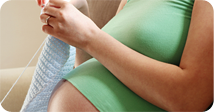
Your Changing Body When You're 36 Weeks Pregnant
Your body continues to make both physical and mental preparations for the big day that's fast approaching. Here’s what you can expect at your 36th week of pregnancy:
Feel the Need to Nest?
- If you feel an unusual surge of energy and a compelling need to clean, decorate, or organize, you might be experiencing what's called nesting.
- Nesting can be useful in moderation if it helps to occupy your mind during the wait for your baby to arrive.
- Accomplishing tasks now can give you more time after your baby is home. It’s a good time to launder 0-3 month clothes and place them in drawers, prepare your baby’s crib, and set up the diaper pail.
- Just try not to overdo it and wear yourself out.
- You might continue to notice several of the typical late-pregnancy symptoms.
- Your cervix might start to dilate in the weeks, days, or hours before the birth of your baby. Every woman and even every pregnancy is different.
- Joints and tissues in your body continue to soften and loosen as your body prepares for your baby's birth. This might be especially significant in your pelvic area.
- You might continue to feel hip pain on one side or lower-back pain.
- Braxton-Hicks contractions might become more frequent as you edge closer to your due date. Remember, these practical contractions play in an important role in helping your body rehearse for childbirth.
- You might notice more practice contractions after physical activity or if you are not getting enough fluids.
Braxton-Hicks (false labor) contractions
- Irregular and remain irregular
- Don't get closer together as time passes
- Often are weak and stay that way (might have stronger contractions followed by weaker ones)
- Stop when you rest, walk, or change positions
- Vary in length and intensity
- Don’t affect your cervix
- Pain usually felt only in the front
True Labor Contractions
- Regular intervals or regular pattern
- Contractions grow closer together over time
- Increase in strength/intensity over time
- Keep coming no matter what you do
- Usually last 30 to 90 seconds (shorter when they begin and get progressively longer and stronger)
- Cause cervix to dilate (open)
- Pain begins in back and moves to front

Wellness and Nutrition When You're 36 Weeks Pregnant
When you’re 36 weeks pregnant, it's natural for your body to begin to slow a little as you get closer to your due date. You're now carrying a full-grown baby inside, and are continuing to adjust to loosening ligaments, swelling, and other challenges.
- Continuing consistent gentle exercise can give you long-term energy. Walking is a great example of exercise you usually can continue through labor.
- Your balanced nutrition now is not only nourishing you and your baby, but also is establishing a strong foundation for possible breastfeeding and your body's timely recovery after delivery.
It's Time to Pack Your Bags!
You might want to have your bag packed and ready, even though you have several weeks before your due date. Don't forget a bag for your partner, too.
Packing Tips:
- Leave your packed bags in a handy place.
- For items you can't pack ahead of time, try taping a list to your suitcase as a reminder.
- You and your partner might want to separate items into two bags: one for the supplies to use during labor and a larger bag for your entire hospital stay.
37th Week of Pregnancy
What to Expect at Your Weekly Checkups
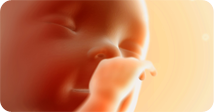
Baby's Growth and Development When You're 37 Weeks Pregnant
When you’re 37 weeks pregnant, you have a reason to celebrate. Your baby is considered full-term. These are a few changes she experiences:
- Your baby’s weight gain slows considerably, but she’s got just a little more room to grow.
- Essential fat (aka baby fat) will continue to form. This will round her out and help her stay warm after birth.
- If you have an ultrasound during the 3rd trimester, the technician might measure the head, stomach, and femur to estimate your baby’s weight.
- She weighs more than 6 pounds.

Wellness and Nutrition When You're 37 Weeks Pregnant
During your 37th week of pregnancy, you, your partner, your baby, and your doctor are making final preparations for your baby’s arrival. Your doctor sees you once a week until labor and delivery. When you’re 37 weeks pregnant, this is a good time to finalize the details of your
birth plan and take time to relax.
Weekly prenatal checkups!
Infant Car Seat Safety Essentials
- By law, and according to the American Academy of Pediatrics (AAP), all infants should ride rear-facing starting with their first ride home from the hospital. Learn more at the AAP Web site.
- AAP guidelines state that all infants younger than 1 year and who weigh less than 20 pounds always should ride rear-facing.
- Because laws and child safety seat standards change, it is recommended that you get a new car seat approved for use for newborns.
- Proper car seat installation is paramount. Read and follow the manufacturer’s instructions that came with your car seat.
- If you need help, find a certified Child Passenger Safety (CPS) Technician. Lists of certified CPS Technicians and Child Seat Fitting Stations are available on the National Highway Traffic Safety Administration (NHTSA) Web site at www.nhtsa.gov, or at www.seatcheck.org. Your local emergency department, children’s hospital, or even baby store also might be able to connect you with a certified CPS Technician.

Your Changing Body When You're 37 Weeks Pregnant
When you’re 37 weeks pregnant and in the weeks that follow, you can breathe easier. You might begin to notice some big changes in your body:
- Your baby might move down into your pelvis. When this happens, you might notice some of your late-pregnancy symptoms go away.
- Your shortness of breath might go away as your lungs have more room to move.
- Less pressure on your digestive organs might alleviate heartburn and constipation. Digestion might be easier, too.
- You probably feel more pressure on your bladder.
38th Week of Pregnancy
How Your Doctor Knows Labor Is Coming

Baby's Growth and Development When You're 38 Weeks Pregnant
During the 38th week of pregnancy, your baby’s systems and functions continue to increase. These include:
- Your baby’s organ functions refine when you are 38 weeks pregnant.
- His nervous system functions increase.
- His brain helps him refine breathing, improve digestion, regulate his heart rate, and prepare for eating during the 38th week of pregnancy.
- Your baby might pass solid waste, called meconium, prior to delivery. If your water breaks or leaks and it is greenish-brown in color, this might indicate meconium spotting in your amniotic fluid. Call your doctor right away if this happens.
- He has reached what will likely be his birth length.

Your Changing Body When You're 38 Weeks Pregnant
Sometime between the 38th and 40th weeks of pregnancy, your body reaches its desired pregnant state.
- Your uterus stretches from the pubic area all the way to the rib cage.
- You experience engagement (also known as lightening). This means baby starts moving down into your pelvis area.
- Gotta go? As your baby’s head settles into your pelvis, you feel added pressure on your bladder. This might lead to even more frequent urination.
- Due to back pain, you might have a hard time finding a comfortable position to sleep, sit, or even stand for very long.
- You might try to take your mind off these discomforts by:
- Reading a book
- Spending time with a friend
- Visiting with family
- Practicing relaxation techniques learned in childbirth classes
- Is it really labor? You might experience some or all of these symptoms as labor begins:
- Cervical changes, including thinning (effacement), softening, and opening (dilation) of the cervix
- Water breaking (though the percentage of women whose water breaks “on its own” is small)
- Diarrhea
- Nausea
- Regularly spaced uterine contractions that do not stop

Wellness and Nutrition When You're 38 Weeks Pregnant
While there is no perfect formula for determining when labor will start, your doctor can measure how close you are at your weekly appointments. These measurements and observations include:
- Presenting or your baby's presentation. This describes the part of your baby's body that is farthest down in your pelvis. Ideally, this is your baby's head.
- Station. This refers to how far your baby's head has moved into your pelvic cavity. Each station is 1 centimeter.
- Your baby, high in your pelvic cavity, begins at -5 station.
- Your baby at 0 station is midway through the pelvis and isengaged in your pelvis. Your baby probably will be at 0 station at the beginning of labor if this is your first pregnancy.
- Once actual labor begins your baby's head continues through the pelvis to 1, 2, and 3 stations.
- At 5 station, your baby's head is crowning (appearing) during birth.
- Dilated or dilation. This refers to how much your cervix has opened. It is measured in centimeters. Some women begin to dilate several weeks before labor. At 10 centimeters, you are ready to start pushing out your baby.
- Effaced or effacement. This refers to how much your cervix has thinned in preparation for birth. This is often measured by percentage. If this is your first pregnancy, effacement usually begins before dilation. At 100% effaced, you are ready to deliver your baby.
Exercises to Help Prepare for the Ultimate Workout
Strengthening the muscles you might use during labor right now can leave you with more flexibility and options for labor positions when the big day arrives. Try tailor sitting, Kegels, and the Pelvic Tilt.
39th Week of Pregnancy
Are These Contractions the Real Deal?
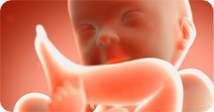
Baby's Growth and Development When You're 39 Weeks Pregnant
When you’re 39 weeks pregnant, your baby is making preparations for her arrival. Changes include:
- The waxy vernix covering her skin and the fine hair called lanugo start to go away when you’re 39 weeks pregnant. Some vernix and lanugo might remain at birth.
- Your baby gets antibodies from the placenta to protect her against illness.
- She also will get more antibodies when you breastfeed her at birth.
- Your baby probably weighs between 7 and 7½ pounds. But it’s normal for her to weigh anywhere from 6 to 9 pounds.

Your Changing Body When You're 39 Weeks Pregnant
When you’re 39 weeks pregnant, your body makes final preparations for your baby’s first meal.
- Your breasts reach their full size. They might enlarge again after delivery until your milk comes in.
- Your breasts might begin to leak a thick, yellowish milk. This is colostrum. It is packed with nutrients and antibodies to help give your baby a great start.
- You might want to speak with a lactation consultant or attend a breastfeeding class before your baby arrives to prepare for her first meal.
- You might gain little or no weight or even lose a pound or two toward the end of your pregnancy.
- You might begin contractions that stop and start. Contractions that continue signal labor. Learn more about contractions.

Wellness and Nutrition When You're 39 Weeks Pregnant
In the final weeks of pregnancy, you can anticipate contractions. They might stop and start or continue at this point in your pregnancy. Either way, they signal your baby’s upcoming arrival!
Experiencing Contractions?
When you’re 39 weeks pregnant, these could be the real thing! Learn more about contractions so you can distinguish the real ones from the false ones.
- Contractions occur when the uterus tightens and relaxes.
- Some contractions are called Braxton-Hicks. These contractions are called false labor. They help your body practice for the real thing.
- In most women, uterine contractions get closer together, become more intense, and last longer as you approach childbirth.
- Sometimes contractions stop altogether.
- You can time the contractions when they start. Call your doctor when they occur closer together, intensify, or last longer.
- During a contraction, you feel pressure and pain in your lower back and abdomen.
- Your abdomen will tighten.
- Between contractions, your abdomen and uterus relax.
- Contractions help your baby travel through the vagina.
- Use a stopwatch or clock to time your contractions.
Exercises to Prepare for the Workout of Labor
A squatting position during labor efficiently can open your pelvic area, allowing your baby to descend and progress more quickly. But squatting can be especially tiring for muscles in your thighs. Here are a few simple exercises that can help you get ready:
Squats:
- Stand with feet shoulder-width apart.
- Slowly lower into a squat position, keeping your back straight and heels flat on the floor. (If heels tend to rise, widen your leg position.)
- Hold for 10 to 30 seconds with hands resting on your knees.
- Slowly stand by pushing up from your knees with your arms.
- Repeat five times.
Wall Sit:
- Stand with your back against the wall and feet shoulder-width apart.
- Carefully slide your back down the wall with your knees bent until you're in the sitting position (as if there were an invisible chair beneath you).
- Rest hands on your thighs for balance.
- Keep your knees/toes pointing forward.
- Hold for a few seconds and slide back up.
- Work up to 10 repetitions.
Plan Ahead for Mealtime
Before your baby arrives, try to plan ahead for nutritious meals after she arrives home.
- If you can, cook and freeze a few simple meals that you quickly can reheat in the oven or microwave.
- Stock up on nutritious foods and snacks to make mealtime easier with a newborn in the house.
Your Pregnancy at 40 Weeks
The Wait's Almost Over...
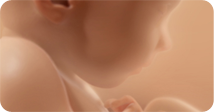
Baby's Growth and Development When You're 40 Weeks Pregnant
Your due date arrives during the 40th week of pregnancy, but it might come and go without fanfare. Changes in your baby’s body prior to birth include:
- A surge of hormones in your baby’s body might play a part in initiating labor.
- Your baby weighs between 7 and 8 pounds and measures between 18 and 20½ inches long. More or less is OK.

Your Changing Body When You're 40 Weeks Pregnant
When you’re 40 weeks pregnant, your body makes many final preparations for labor and delivery.
- Your bones, muscles, and joints continue to relax.
- The ligaments in your pelvis loosen to enable it to open up during birth.
- You might feel pressure on your pelvis.
- You might have lower-back aches.
- You might have trouble finding a comfortable sleeping position.
- Rest as much as you can to prepare for the upcoming labor and delivery.
- Your cervix might open (dilate). Dilation can begin in the weeks, days, or hours prior to labor.
- The mucous plug that once blocked your uterus to stop bacteria from entering your cervix might release. This small brown or blood-tinged discharge from your vagina might go unnoticed. This normal process is commonly called the show. It is a sign that your body is preparing for labor.
- In 10% of women, the amniotic sac of water breaks prior to labor. It can gush or leak slowly.



































